Are you tired of dealing with a slimy dog water bowl that seems impossible to keep clean? Maintaining a fresh and hygienic water bowl for your furry friend is crucial for their health and well-being.
By following a few simple yet effective tips, you can easily prevent that slimy buildup and ensure your dog always has clean water to drink.
Key Takeaways
- Change water daily and clean with hot water to prevent slimy buildup
- Use stainless steel or ceramic bowls to discourage biofilm formation
- Wipe the bowl between refills to maintain cleanliness and hygiene
- Weekly bleach rinse sanitizes the bowl and eliminates harmful bacteria
Reasons for Slimy Dog Water Bowls
If you’ve ever wondered why your dog’s water bowl gets slimy, it’s likely due to the formation of biofilm, a thin layer of bacteria that can harbor harmful pathogens. When you neglect to clean your dog’s water bowl regularly, biofilm thrives, creating an ideal environment for bacteria like Listeria and E. coli to grow and pose potential health risks to your furry friend. The slippery film you see in the water bowl indicates the presence of thriving bacterial colonies that can lead to infections if consumed by your dog.
To prevent biofilm buildup and keep your dog’s water bowl clean, it’s essential to clean it properly with hot soapy water. Failing to change the water daily and clean the bowl allows biofilm to develop, making it slimy and potentially dangerous for your pet. By maintaining a routine of thorough cleaning and regular water changes, you can ensure a safe and hygienic drinking environment for your beloved canine companion.
Tips to Prevent Biofilm Formation
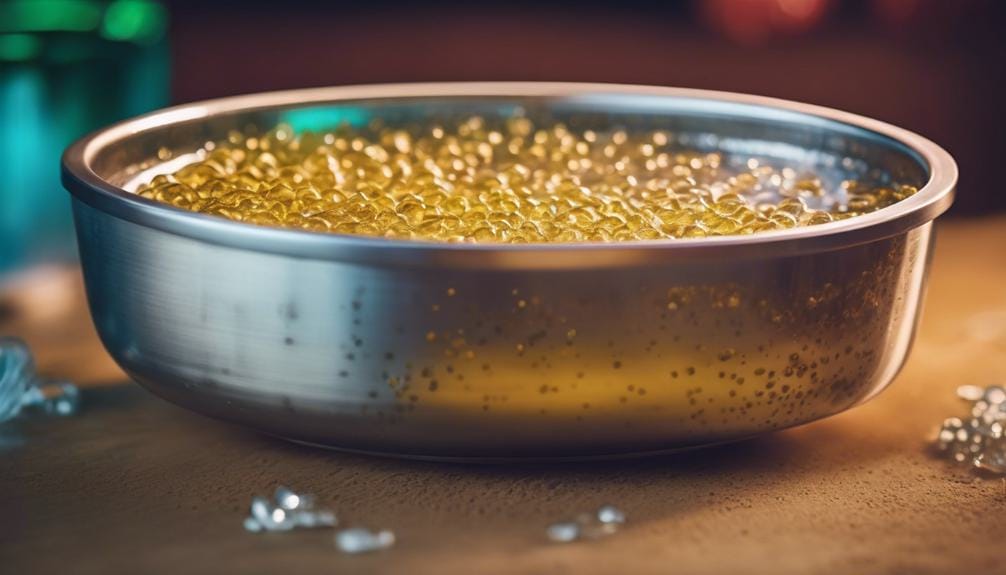
To maintain a clean and hygienic environment for your dog’s water bowl, implementing simple yet effective strategies can help prevent the formation of slimy biofilm. Changing your dog’s water daily is crucial in preventing biofilm buildup.
Wiping the water bowl with a paper towel after each refill can help remove potential biofilm, while cleaning it daily with hot water and natural soap will prevent slimy residue. To further combat biofilm, sanitize the bowl weekly with a bleach rinse to eliminate harmful bacteria.
Opting for stainless steel or ceramic bowls instead of plastic can also reduce biofilm formation. Remember, bad biofilms not only create slime but also harbor bacteria that can be harmful to your furry friend.
Rinse thoroughly, change water regularly, and follow these tips to stop biofilm in its tracks and keep your dog’s water bowl clean and safe.
Best Materials for Dog Bowls
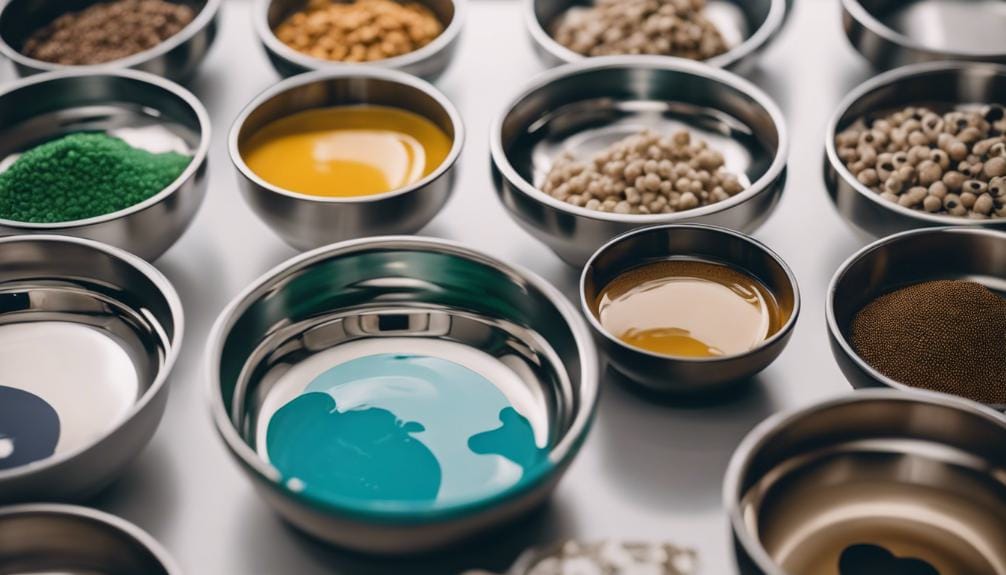
Wondering what materials are best for your dog’s water bowl to ensure cleanliness and hygiene? When choosing the right material for your dog’s water bowl, consider the following options:
- Stainless Steel: Stainless steel bowls are non-porous, making them resistant to bacterial growth. They’re easy to clean and maintain, providing a hygienic environment for your furry friend.
- Ceramic: Ceramic bowls are another excellent choice as they’re also easy to clean and maintain hygiene. They’re sturdy and less prone to bacterial buildup compared to plastic bowls.
- Copper: Copper bowls have antimicrobial properties that can help prevent slime formation and promote a cleaner water bowl.
Opting for high-quality materials like stainless steel, ceramic, or copper can significantly reduce the risk of bacterial contamination and ensure your dog always has a clean water bowl to drink from. Choose wisely to keep your dog healthy and happy.
Cleaning and Disinfecting Strategies
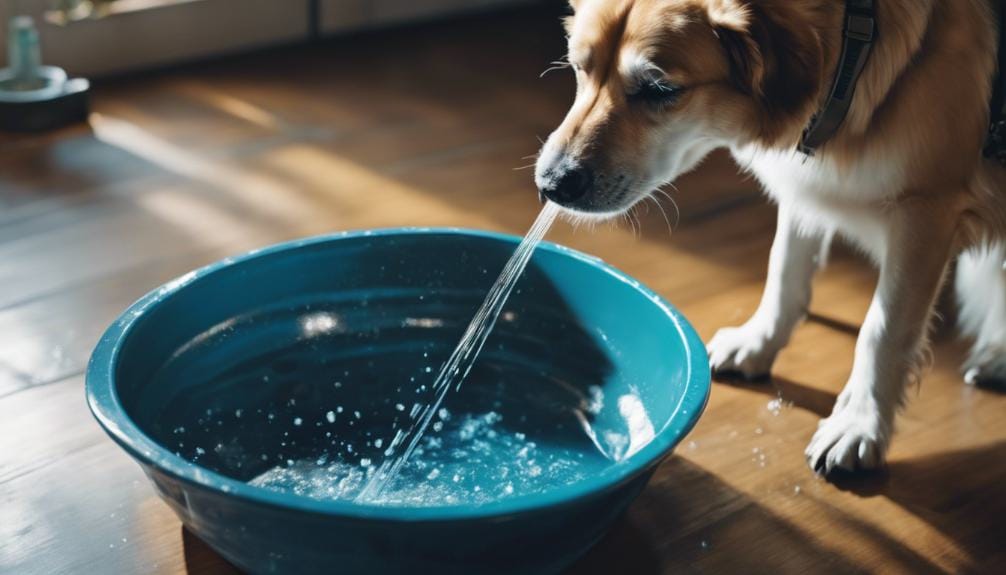
For optimal cleanliness and hygiene, implementing effective cleaning and disinfecting strategies is essential for maintaining your dog’s water bowl. When it comes to pet bowls, particularly water bowls, preventing slimy buildup is crucial. Consider using stainless steel or ceramic bowls as they are less prone to biofilm formation compared to plastic bowls. To keep the water bowl clean and free from slime, make sure to clean it daily with hot water and natural soap. Additionally, wiping the bowl with a paper towel between refills can help maintain its cleanliness. A diluted bleach rinse on a weekly basis is recommended to effectively sanitize the bowl and eliminate any lingering bacteria. Remember, changing the water daily is key to preventing bacterial growth and the development of slimy residues in your dog’s water bowl.
| Strategies | Frequency | Recommended Action |
|---|---|---|
| Daily Cleaning | Daily | Wash with hot water and natural soap to prevent slimy buildup |
| Diluted Bleach Rinse | Weekly | Sanitize effectively for optimal cleanliness |
| Stainless Steel/Ceramic Bowls | N/A | Choose over plastic to discourage biofilm formation |
| Wiping Between Refills | As needed | Use a paper towel to maintain cleanliness |
| Changing Water | Daily | Essential to avoid bacterial growth and slimy residues |
Importance of Regular Maintenance
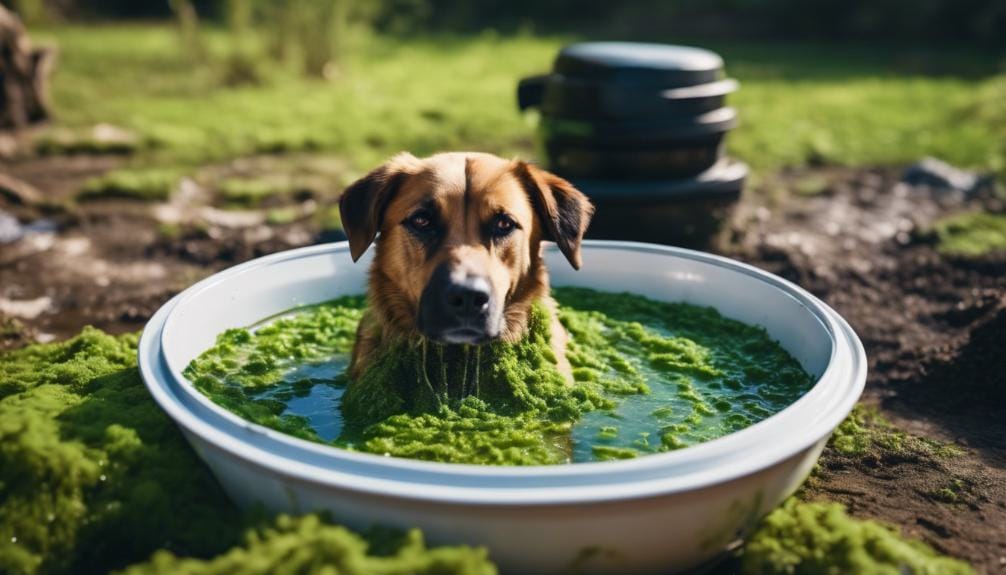
Regular maintenance of your dog’s water bowl is essential to prevent the formation of slimy biofilm and ensure your pet’s health and well-being. Here’s why maintaining your pet’s water bowl is crucial:
- Preventing Bacterial Growth: Regular cleaning helps prevent the buildup of biofilm, which can harbor harmful bacteria like Listeria and E. coli. These bacteria pose health risks to your pet if not cleaned regularly.
- Ensuring Hygiene: Changing the water daily and cleaning the bowl with hot water and soap is vital for preventing slime accumulation. Neglecting regular maintenance can lead to infections and gastrointestinal issues for your pet, impacting their overall health.
- Reducing Health Risks: Consistent cleaning routines create a hygienic environment for your pet and reduce the risk of biofilm formation. By prioritizing maintenance, you safeguard your pet’s well-being and minimize the chances of bacterial contamination in their water bowl. Proper upkeep is key to a healthy and happy pet.
Frequently Asked Questions
How Do I Prevent Mucus in My Dog’s Water Bowl?
To prevent mucus in your dog’s water bowl, clean it daily with hot soapy water, opt for stainless steel or ceramic bowls, change water daily, and sanitize weekly with a diluted bleach solution. These steps maintain a clean bowl for your pup.
How Do You Keep Slime Out of a Dog’s Water Bowl?
To keep slime out of your dog’s water bowl, change the water daily, wipe it with a paper towel after refills, and clean with hot water and mild soap. Opt for stainless steel or ceramic bowls and sanitize weekly with a diluted bleach solution.
How Do I Prevent Biofilm in My Dogs Water Bowl?
To prevent biofilm in your dog’s water bowl, change the water daily, wipe the bowl after refills, clean it with hot water and soap daily, and sanitize weekly with diluted bleach. Opt for stainless steel or ceramic bowls to reduce biofilm formation.
What Can I Put in My Dogs Water to Keep It From Getting Slimy?
To keep your dog’s water bowl from getting slimy, try adding apple cider vinegar, lemon juice, or a pinch of sea salt. These natural options can help prevent buildup and maintain water clarity. Experiment with different flavors like mint or cinnamon for added benefits.
Conclusion
In conclusion, maintaining a clean and slime-free water bowl for your dog is crucial for their health and well-being.
By following a regular cleaning routine, choosing the right materials, and using proper disinfecting techniques, you can ensure that your furry friend always has fresh and safe drinking water.
Remember, a little effort in keeping the water bowl clean goes a long way in keeping your dog happy and healthy.

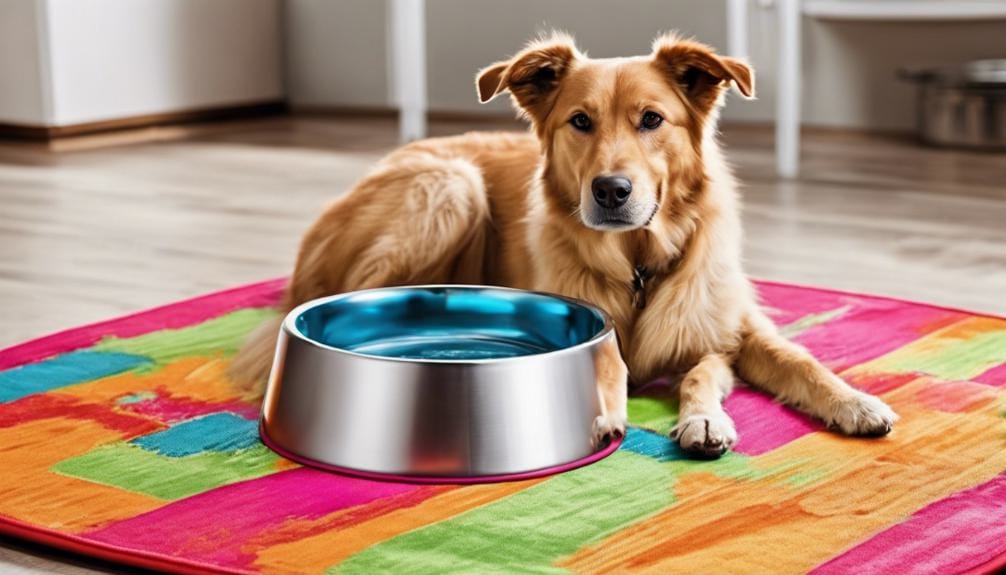
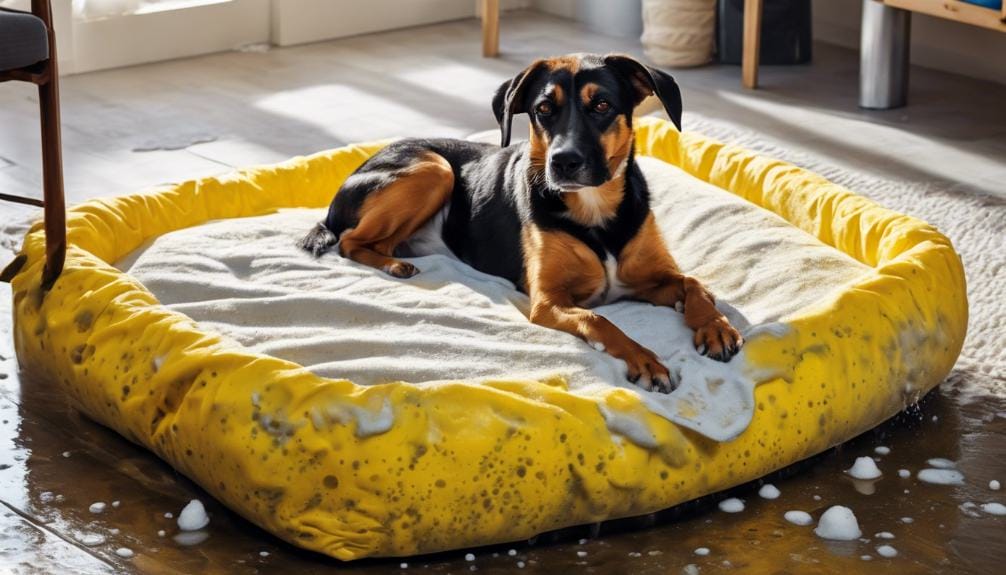
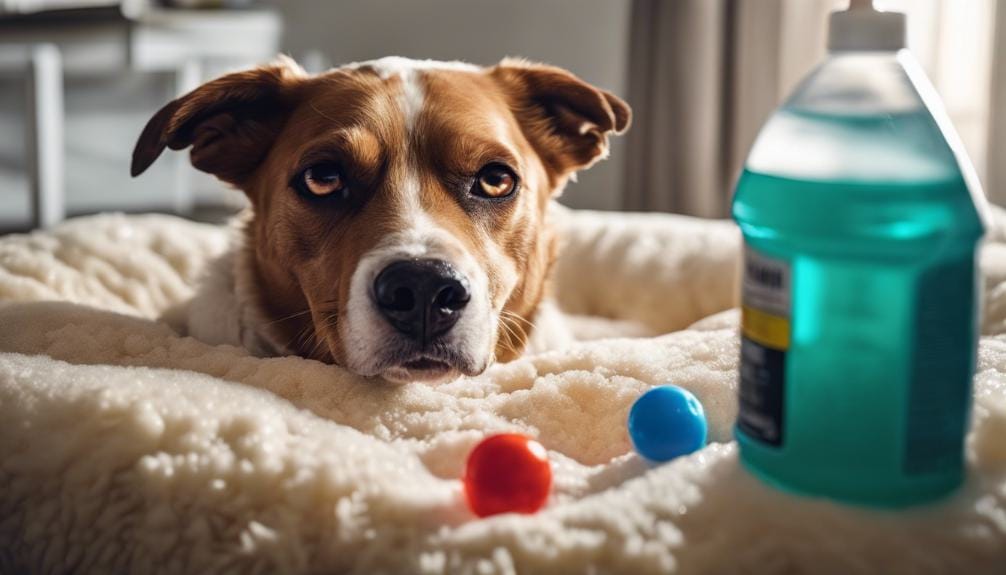
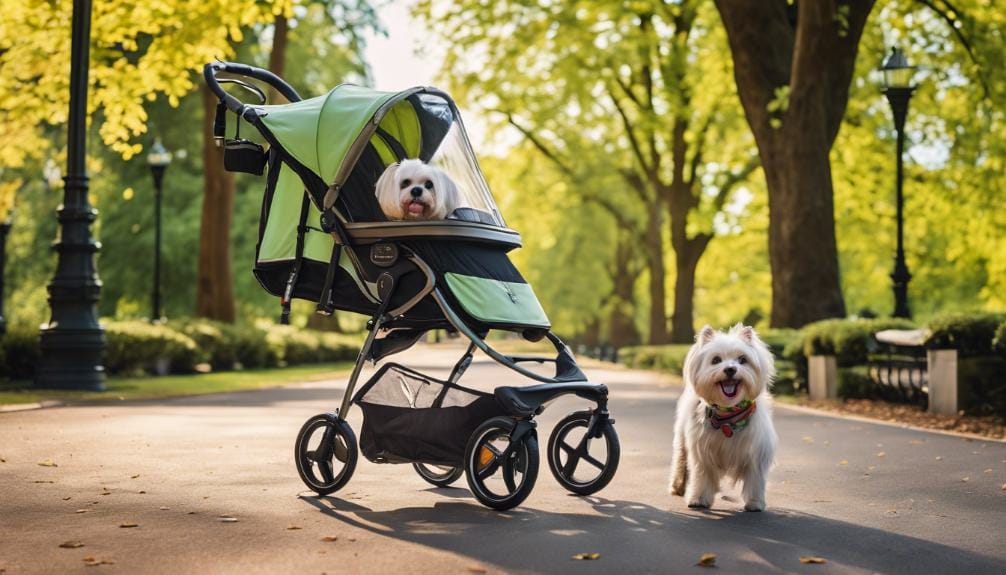
Leave a Reply
You must be logged in to post a comment.